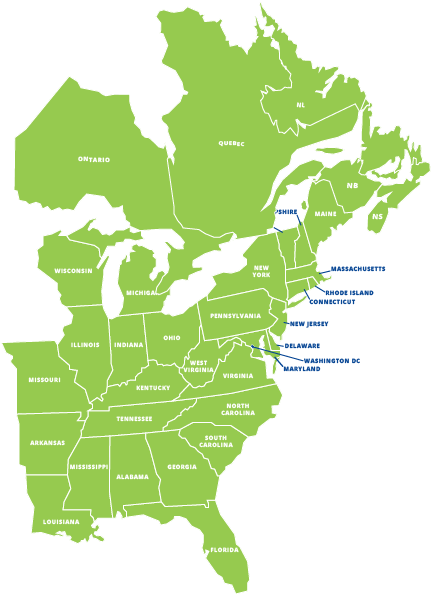Animal shelters play a crucial role in providing care and temporary housing for abandoned or stray animals. However, shelters often face challenges when dealing with aggressive dogs, which can pose risks to both staff and other animals. Understanding the underlying causes of aggression and implementing effective management strategies are essential for ensuring the safety and well-being of both the animals and the shelter staff.
Understanding Aggression in Dogs
Aggression in dogs can manifest in various forms, including growling, snarling, snapping, or biting and can be triggered by a multitude of reasons. Some of the most common reasons a dog may act aggressively are:
- Fear
- Territoriality
- Stress
- Anxiety
- Frustration
- Past traumatic experiences
- Uncertainty about their surroundings
- Lack of socialization
- Medical factors
- Survival instincts
- Resource guarding (protecting food, toys, etc.)
If you know a dog’s history, it may be easier to identify their triggers and manage their aggression. However, as is the case with many shelter dogs, that history may not always be available, and it can take time to fully understand where a dog’s aggressive behavior is rooted.
Assessing Aggressive Behavior
The first step in managing aggressive dogs in a shelter is understanding the signs of aggression. Some dogs will present obvious signals, while others may present more subtle ques. To avoid harmful situations for the dog, its handler, and other dogs that may be present, it’s important that all staff members, volunteers, and anyone else handling dogs are aware of these signs.
Some common signs of aggression in a dog include:
- Stiffened posture with raised hair along its back. A dog may also lower its head and pull back its ears.
- Defensive posture, which may include cowering, tail tucked between the legs, and backing away.
- Offensive posture, which typically includes standing tall, leaning forward, and displaying assertive body language.
- Locked eyes. When feeling threatened, a dog will likely fixate its eyes on the perceived threat, not breaking eye contact.
- Vocal indicators such as growling, snarling, or excessive barking.
It’s important to remember that dogs may display some or none of these signs before becoming aggressive. For example, some dogs may have an injury or medical condition that may cause them to bite or snap when touched in an area that causes pain. Some dogs may also present unpredictable behavior.
Approaching and Handling Aggressive Dogs
When working with shelter and rescue dogs, it’s advisable to treat each incoming dog as if it has aggressive tendencies. This is especially important for dogs that have a known history of aggression, are coming from a traumatic environment (abusive home, living on the street, etc.), or have no known history at all.
Here are some techniques and mindsets you may want to follow to better manage aggressive animals in your shelter:
Environment & Behavior Assessment
When working with a potentially aggressive dog, handlers should first approach with caution, analyzing the environment and the dog’s behavior, looking for signs of aggression as listed above.
Use of Safety Equipment
It’s also advisable to use safety equipment. This may include leashes, muzzles, and personal protection gear, such as gloves, thick clothing, long sleeves, face shields, and steel toed boots. To protect other animals in your care, you may also consider placing new rescues in solitary enclosures and slowly introducing them to others until you can properly assess their behaviors.
Patience and Compassion
Approaching potentially aggressive dogs with patience, compassion, and empathy can make a big difference in both calming the dog’s immediate behavior and producing long-term results. Since most acts of aggression are due to feelings of fear, taking your time to calmly approach the dog versus abruptly encroaching its space allows the dog to calm down on its own time and helps to establish trust and reinforce feelings of safety.
Socialization and Training for Aggressive Dogs
Proper socialization and training are essential for preventing and managing aggression in dogs. Exposing dogs to a variety of people, animals, and environments from a young age can help them develop positive social skills and reduce the likelihood of fear-based aggression later in life. Additionally, basic obedience training can help establish clear communication between the dog and the handler, facilitating better behavior management.
Here are some techniques shelters can use to prevent or reduce aggressive behaviors:
Positive Reinforcement
Positive reinforcement techniques, such as reward-based training and behavior modification, can be effective in addressing aggressive behavior in dogs. Rewarding desired behaviors, such as calmness and non-aggression, helps reinforce positive associations and encourages the dog to adopt more appropriate responses to stressful situations.
Behavioral Enrichment
Enrichment activities, such as interactive toys, puzzle feeders, and sensory stimulation, can help reduce stress and boredom in shelter dogs. Providing mental and physical stimulation can also help redirect their energy away from aggressive behaviors and promote relaxation and contentment.
Professional Intervention
In cases where aggressive behavior persists despite efforts to address it, seeking professional assistance from a certified animal behaviorist or veterinarian behaviorist may be necessary. These experts can conduct comprehensive assessments, develop personalized behavior modification plans, and provide ongoing support to both the shelter staff and the dog.
Designing a Safe Shelter
At Direct Animal, we understand the unique needs of animal shelters and rescue groups. We use that knowledge to design and build quality, durable equipment that addresses those needs and can last the lifetime of your shelter. Shop our extreme dog kennels, dog room dividers, and other professional shelter equipment to see what we offer.




